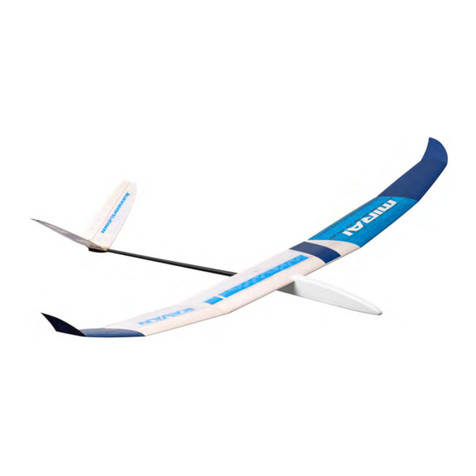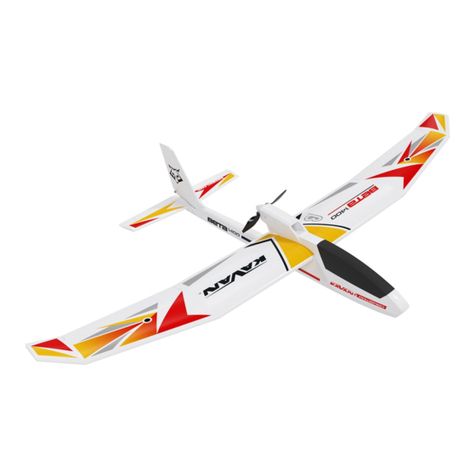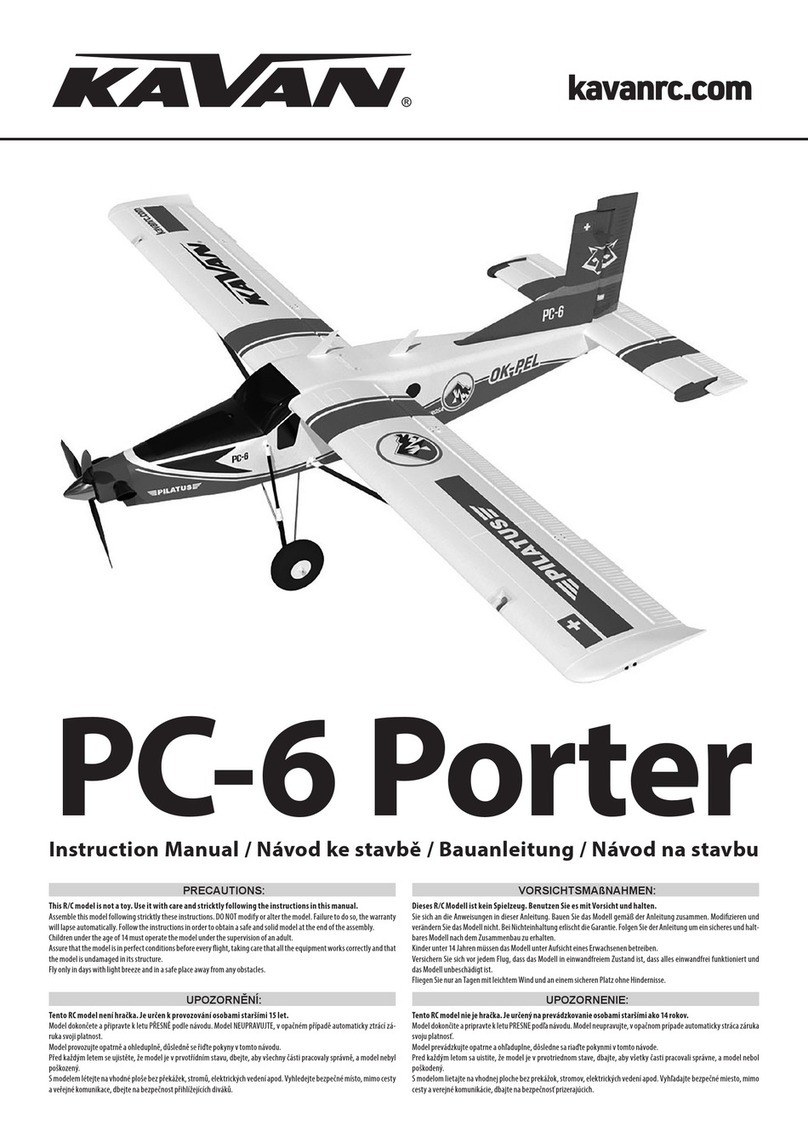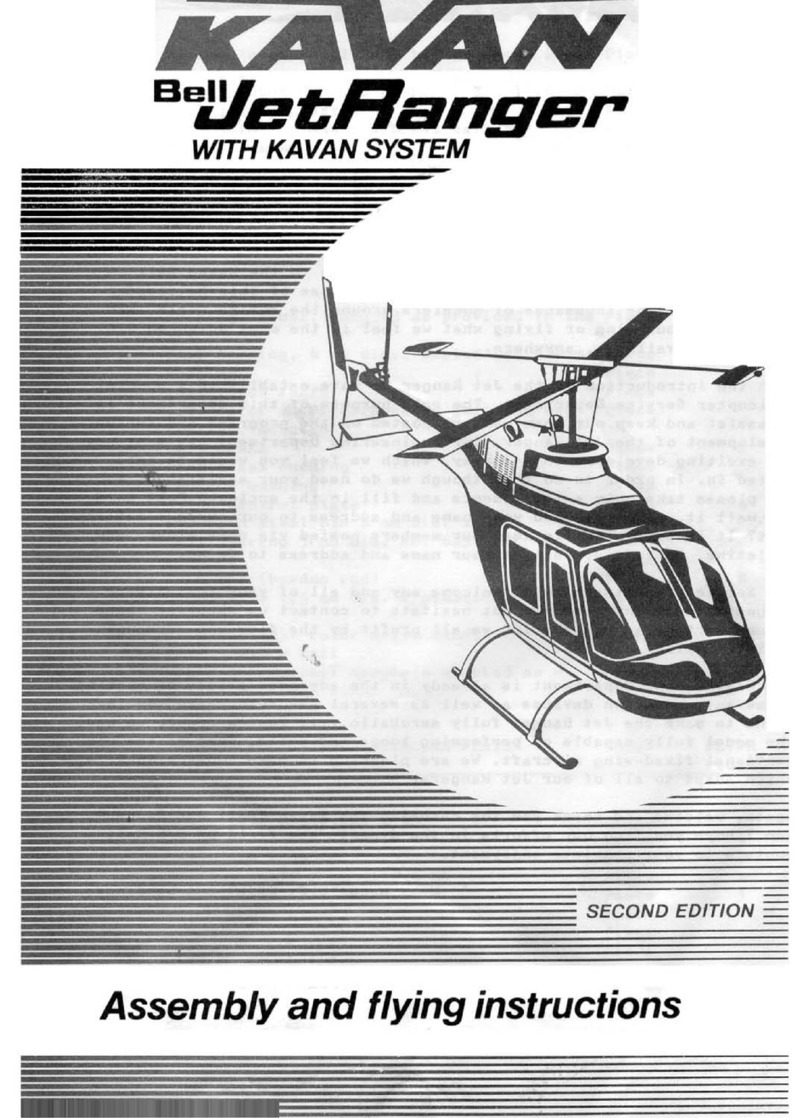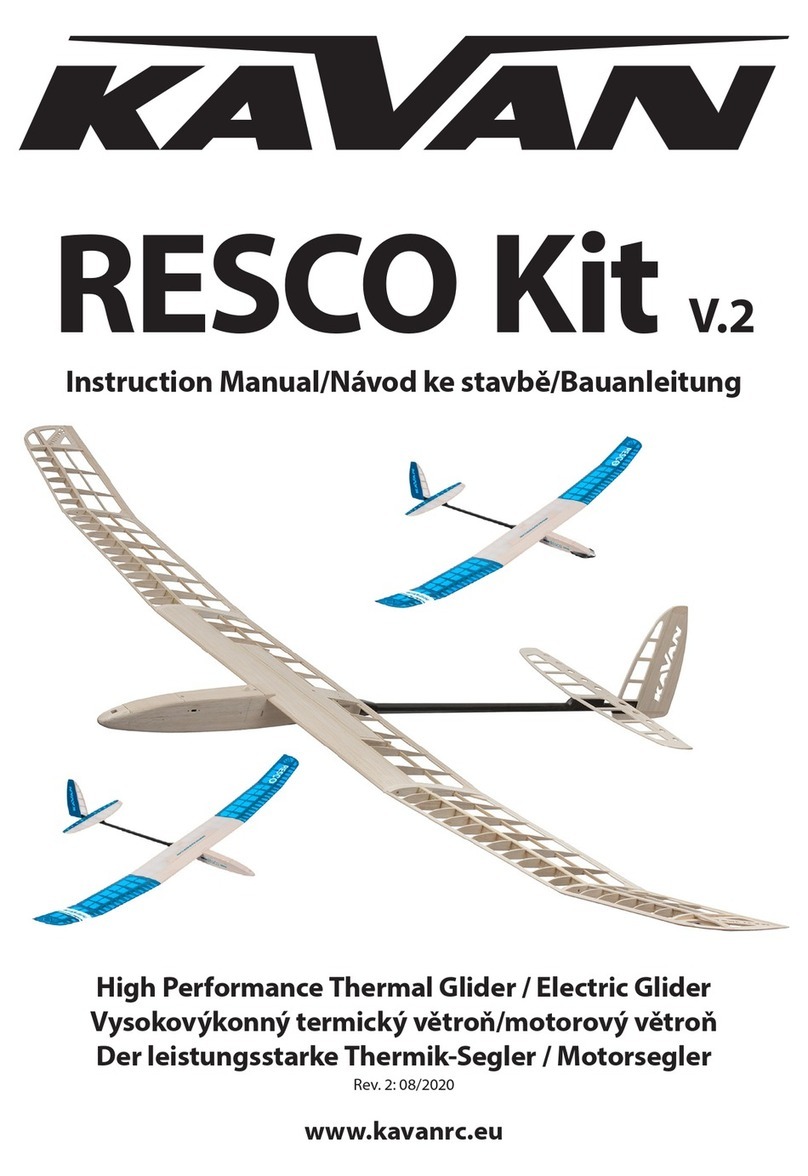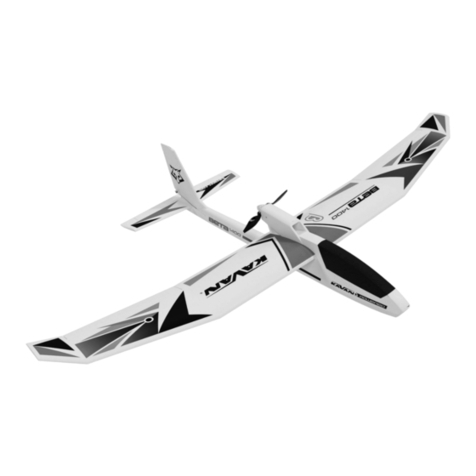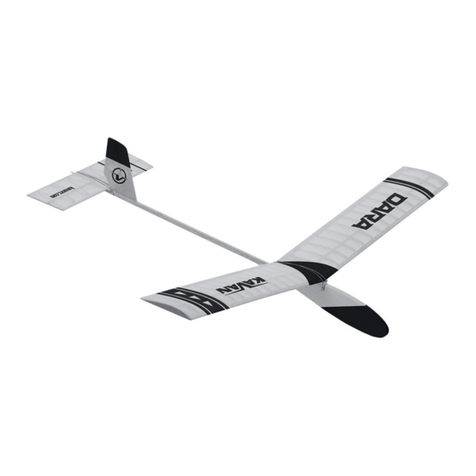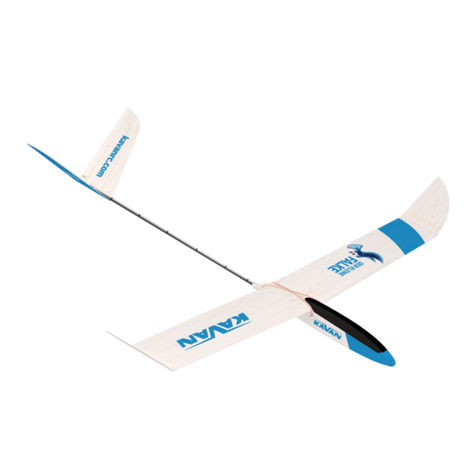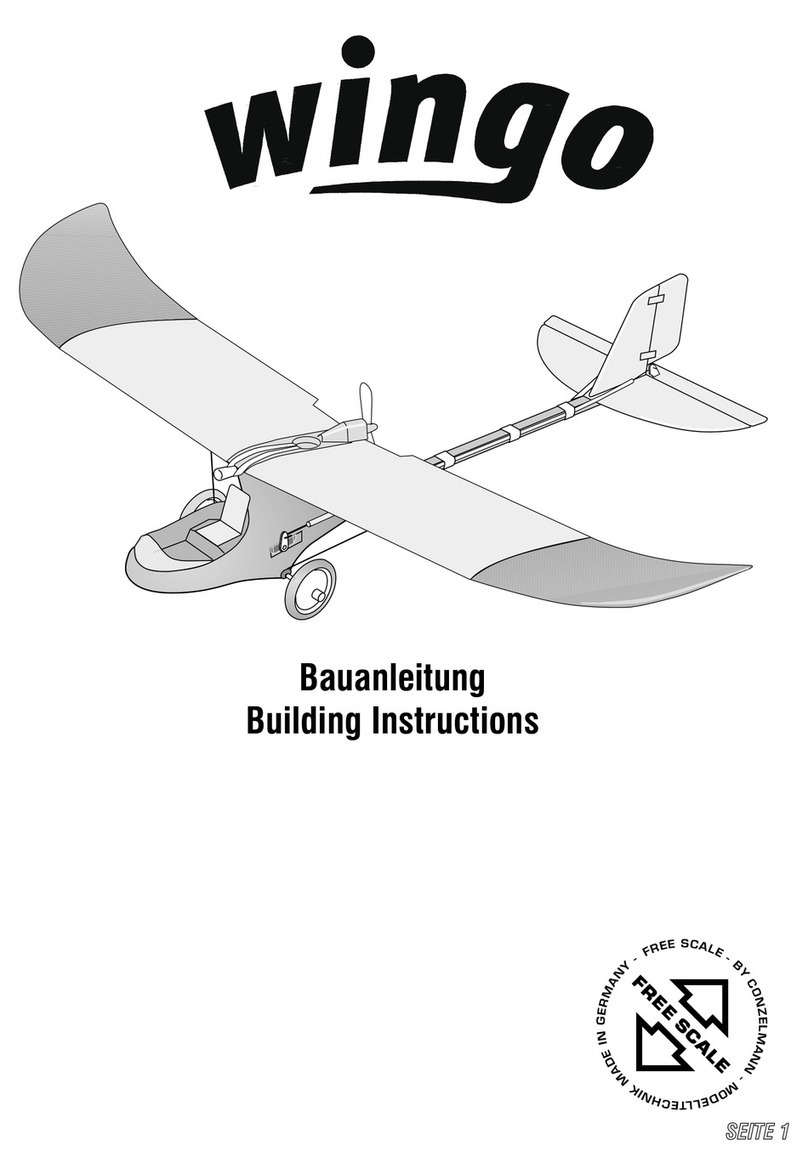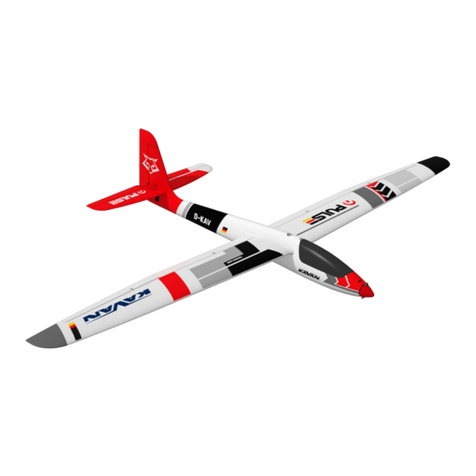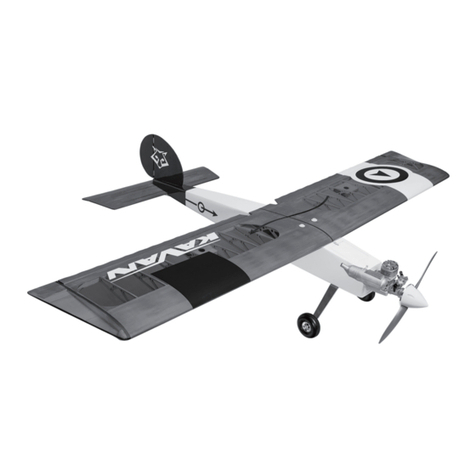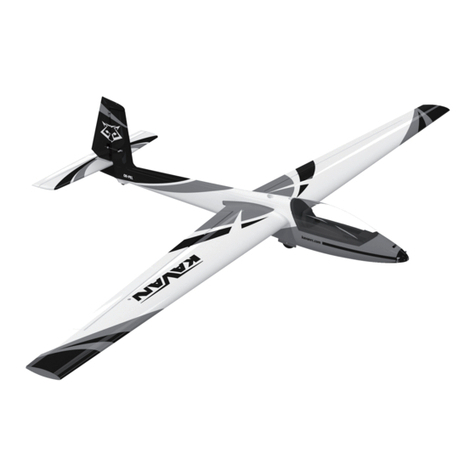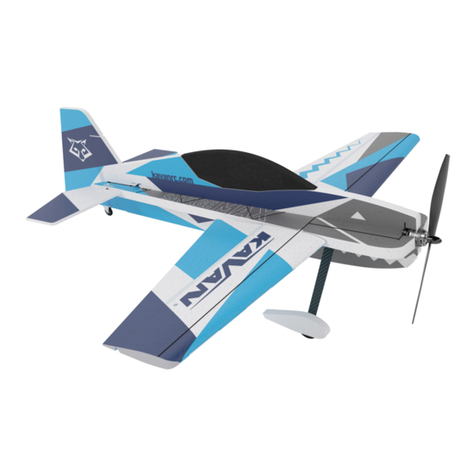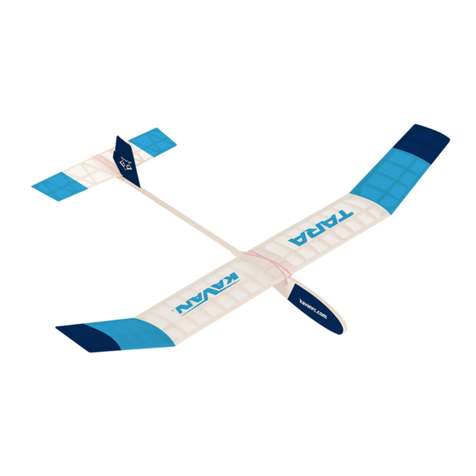
9
te dle hrany a přilepte (přilakujte) ke kostře.
Trup není potřeba potahovat. Potah křídla a VOP je poté
možno vypínat zředěným napínacím lakem. Jakmile je
potah rovnoměrně napnutý (po 1-2 vrstvách laku), mů-
žete přilakovat barevné papírové doplňky – a pokračo-
vat v lakování.
Celý model nalakujte za sucha a teploty nad 20°C (ně-
které druhy laků mají tendenci při nižší teplotě a vysoké
vlhkosti vzduchu bělat – pokud se tak stane, zpravidla
pomůže přemístění do suchého a teplého prostředí a
opatrné přetření modelu čerstvým ředidlem používa-
ným pro ředění laku), celkem 3-5 vrstev velmi řídkým
lakem. Na trup po natření bezbarvým lakem a násled-
ném přebroušení můžete přilakovat barevné papírové
doplňky - vyznačení kabiny apod. Mezi jednotlivými
nátěry nechejte lak několik dnů schnout – sledujte také,
zda se křídlo nebo VOP nekroutí. V případě, že by došlo
k většímu deformování, je nutno takový díl po každém
lakování položit na rovnou desku chráněnou plastovou
fólií, zatížit (opět pomohou časopisy vložené do plasto-
vého sáčku) a nechat důkladně zaschnout. Jako posled-
ní vrstvu můžete nanést řídký lesklý lak.
Samolepky nalepujte až nakonec na nalakovaný model.
Konečné sestavení modelu a vyvážení
Na levý bok hlavice trupu upevněte bočním vlečný
háček 36 pomocí 2 vrutů 37 v poloze dle stavebního
výkresu (vlečný háček je nastavitelný – při silnějším
větru se posunuje směrem dopředu, při slabém větru
směrem dozadu tak, aby model během vleku hladce
stoupal v plynulém oblouku).
Křídlo i vodorovnou ocasní plochu připoutejte gumou
dodávanou ve stavebnici. Na každém konci poutací
gumy uvažte „očko“, které pak navléknete na poutací
kolík.
Na obě strany lože křídla si zespodu označte lihovým
značkovačem nebo kouskem barevné samolepky
správnou polohu těžiště (na plánku vyznačeno šip-
kou). V tomto místě křídlo podepřete prsty; trup mo-
delu by se měl ustálit ve vodorovné poloze. Zvedá-li
se příď modelu nahoru, dovažte např. plastelínou při-
lepenou na přední část trupu (po konečném zalétání
můžete plastelínu nahradit např. malými vruty zašrou-
bovanými do hlavice).
Přesné vyvážení modelu je nezbytně nutné pro správ-
né zalétání modelu - nesprávně vyvážený model bude
obtížné seřídit nebo nebude vůbec letuschopný.
ZALÉTÁNÍ MODELU
Znovu zkontrolujte správnou polohu těžiště a nemáte-li
příliš zborcené křídlo nebo vodorovnou ocasní plochu
modelu. Model zalétávejte za klidného, bezvětrného
počasí - nejlépe navečer. Model uchopte pod křídlem a
s přídí lehce skloněnou k zemi jej s mírným švihem vy-
pusťte. Sledujte jeho let. Sestupuje-li příliš strmě dolů,
zkontrolujte vyvážení. Je-li v pořádku, podkládejte VOP
vzadu pod poutacím kolíkem tenkými podložkami tak
dlouho, až model plynule klouže k zemi. V případě, že
model po hodu „houpe“, naopak zadní podložku pod
výškovkou (39) snižte. Po zaklouzání směrovku 30 vy-
chylte asi 2 mm doleva (při pohledu od ocasu ve směru
letu). Díky tomu by měl nyní model po vypuštění létat
ve velkých levých kruzích, zatímco při vleku by jej tah
působící na nesouměrně umístěný boční vlečný háček
měl udržovat v přímém letu.
Po zaklouzávání můžete DINGO zkusit vlekat na silo-
novém vlečném lanku (rybářském vlasci) dlouhém 25
m. Vlečné lanko je třeba nejprve připravit: Přivažte ko-
vový kroužek (dračí smyčka je velmi dobrý druh uzlu
pro tento účel) a praporek (kousek červené látky, který
lanko zviditelňuje při vleku a pomáhá při vyhledávání
jeho konce v trávě) ke konci lanka na „straně modelu“.
Kroužek zachyťte za vlečný háček, lanko rozviňte, a za-
tímco pomocník drží model, s volným koncem postu-
puje proti větru, dokud není lanko mírně napjaté – drž-
te jej tak až do vypuštění modelu. Model se vypouští
prakticky vodorovně, s přídí jen velmi mírně vzhůru.
Dejte pomocníkovi znamení a oba se rozběhněte proti
větru – pomocník po několika krocích model vypustí.
Vy svižným tempem běžte proti větru a neustále sle-
dujte model pohledem přes rameno. Rychlost běhu
přizpůsobujte rychlosti stoupání modelu. Model musí
lanko napínat stálou silou a plynulým obloukem stou-
pat. Čím je vítr silnější, tím můžete běžet pomaleji.
Pokud tah v lanku povoluje a model stoupá jen zvol-
na (popř. vybočuje do strany), je třeba běh zrychlit.
Naopak, pokud tah v lanku sílí a model má tendenci
prudce vybočit na jednu stranu, je třeba běh zpomalit
a počkat, až se model srovná do přímého směru. Vlekat
je třeba s citem; zvláště za silnějšího větru by při příliš
rychlém vleku mohlo dojít k poškození modelu (mohla
by vám „zatleskat křídla“). Jakmile se vám dostane té-
měř nad hlavu, správně seřízený model by měl mírně
uhýbat do levé zatáčky - v tom okamžiku se zastavte
a model nechejte, aby vás předlétl a uvolnil se z vleč-
ného lanka.
Pro zálet posuňte vlečný háček co nejvíce dopředu. V
průběhu zalétávání modelu můžete háček postupně
posouvat dozadu, podle toho, jak se chová na vleku
– pokud stoupá neochotně, je třeba jej posunout do-
zadu; pokud se ve vleku vzpíná a ochotně vybočuje
do stran, je třeba jej posunout dopředu. Kruhy v kluzu
seřizujte na velký průměr, aby model neletěl ve velkém
náklonu; seřízení provádějte opatrným přihýbáním
směrovky. Výchylka pro kroužení stačí velmi malá, oko-
lo 2 mm. Pro soutěžní létání je vhodné model upravit
pro determalizátor s časovačem, který po uplynutí
nastaveného času vyklopí vodorovnou ocasní plochu
nahoru (cca 45°), a model ve velkých zhoupnutích sám
přistane.
Pěkné létání s modelem DINGO přeje KAVAN Team!
